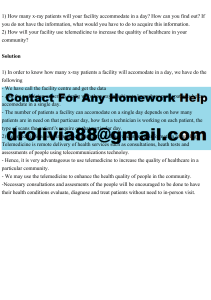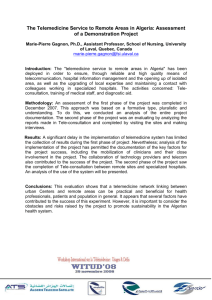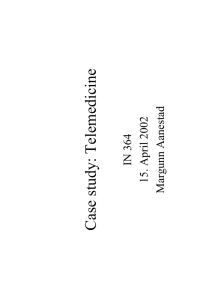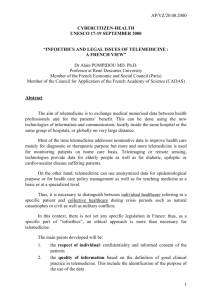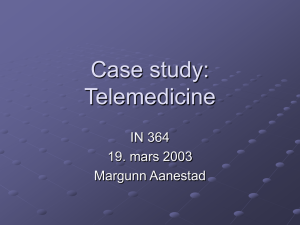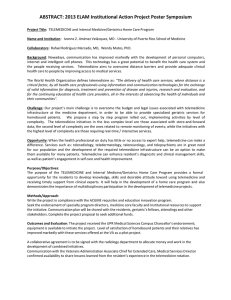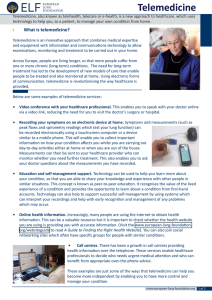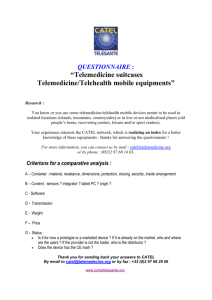Dr Richard Pope - Consultant Diabetologist, Airedale
advertisement
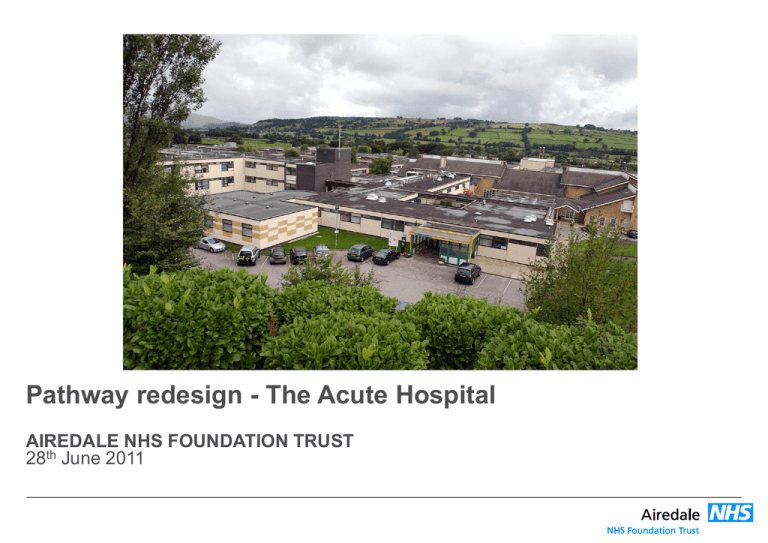
Pathway redesign - The Acute Hospital AIREDALE NHS FOUNDATION TRUST 28th June 2011 How to change? - challenge everything • Notes: Shared electronic patient records – John Parry TPP SystmOne • Opinion: e-consultation – John Stoves / John Connolley • Who is in charge?: Care Planning – Shahid Ali / R Pope Exemplars Diabetes Renal Medicine Palliative Care Today’s focus: Telemedicine…. Prison Healthcare - the start line Patient Care • UK Prison population - guaranteed the same access to healthcare as the general population • Prison population 82,000 - challenging health requirements Security and Costs • Inmates escape from hospitals, not from prisons • Escort and bed watch costs >£25M/year (This does not includes consultation, hospitalisation and treatment) • Public prisons - healthcare costs with PCTs Could telemedicine help? Prisons supported (5yr programme): • Wide geographical area • 20 prisons, including: Acklington (Northumberland) down to The Verne, YOI Portland (Dorset) • 21 outpatient specialties offering elective services via telemedicine link, e.g. orthopaedics, dermatology, neurology, dietetics and physiotherapy • A&E urgent care service available • Effective Revised Pathway Where it is safe and effective to do so Patients are treated in the Prison, not Hospital Cost savings: Reduce acute and elective transfers out by ~50% Average cost per escort episode: £425 Average cost per bed watch episode: £3,731 Savings at least £400/transfer avoided Other Benefits: Patient and Staff satisfaction Empowering Prison clinical staff Less disruption to NHS Acute Trusts Improved patient privacy and dignity Improved response times Reduced prison lockdowns Challenges faced: Implementation Technology • Existing technology – highly reliable • Installing / maintaining in prisons… Culture RED TAPE…… • Clinical acceptance – initially sceptical but now well supported • Clinical capacity - job plans • Critical mass crucial to success Governance • Strong clinical governance • Contemporaneous record • Consultant delivered service Implementation • Clear processes agreed • Go live planned carefully • Funding arrangements • Security arrangements Care close to Home Care in the Home Question 1: Overall level of satisfaction with completed Telemedicine Consultations 95% patients and 90% of clinicians described themselves as being “very satisfied” or “satisfied”. Question 2: Level of satisfaction – ability to communicate issues and concerns during the Telemedicine consultation 90% of users described themselves as “satisfied” or “very satisfied”. Several patients have mentioned the positive benefit of including family members in the consultation:“It was good how we can all have input; Dr. Pope, Jackie [DSN], myself and my wife all round the TV” Patient quote “…There is no expensive journey to and from hospital. No re-organising of work commitments to then spend time sitting around in waiting rooms… simply a live link up where I can talk freely and we can swap ideas as to how to improve my life…” Numerous potential use cases: When to use? • Long Term Conditions • Outpatients • Nursing Homes • Employee Health & Well being • Early supported discharge admission avoidance • Dementia – carer support • Social Care • Purely Social calling • Specialist Networks NHS Yorkshire and the Humber Hospital:Hospital telemedicine “Distributed Specialist Networks” • Telestroke tender won • Infrastructure located at Airedale Mobile telemedicine carts in every Yorks+Humber ED VC-enabled laptops with on call consultant • Intention that this would act as a common platform …….?? Conclusion • • • • • Very strong future for digital healthcare (telemedicine) Transforming the Acute Hospital’s role and reach Hub approach key to get to scale Much to learn, but No more pilots – time to commit richard.pope@anhst.nhs.uk
